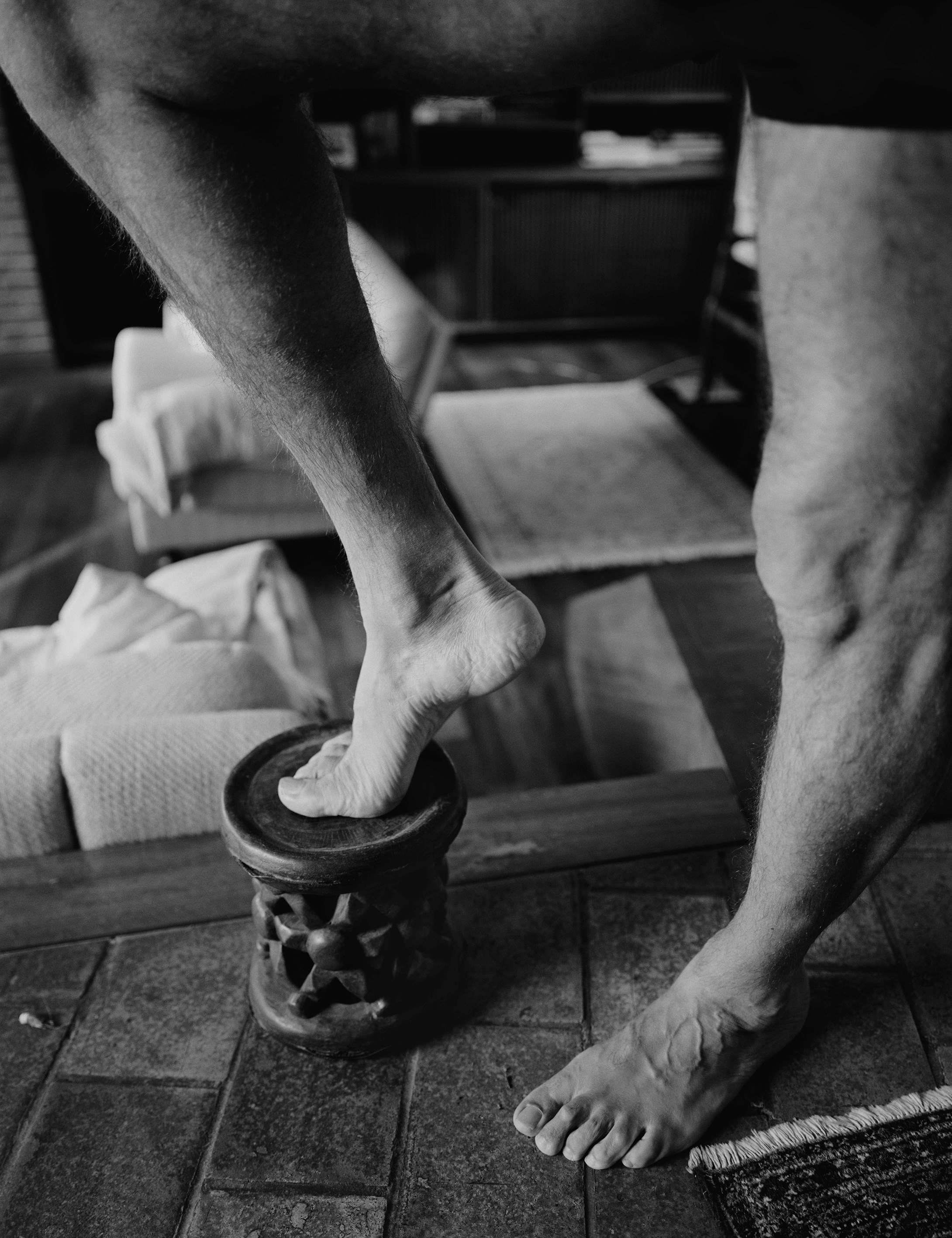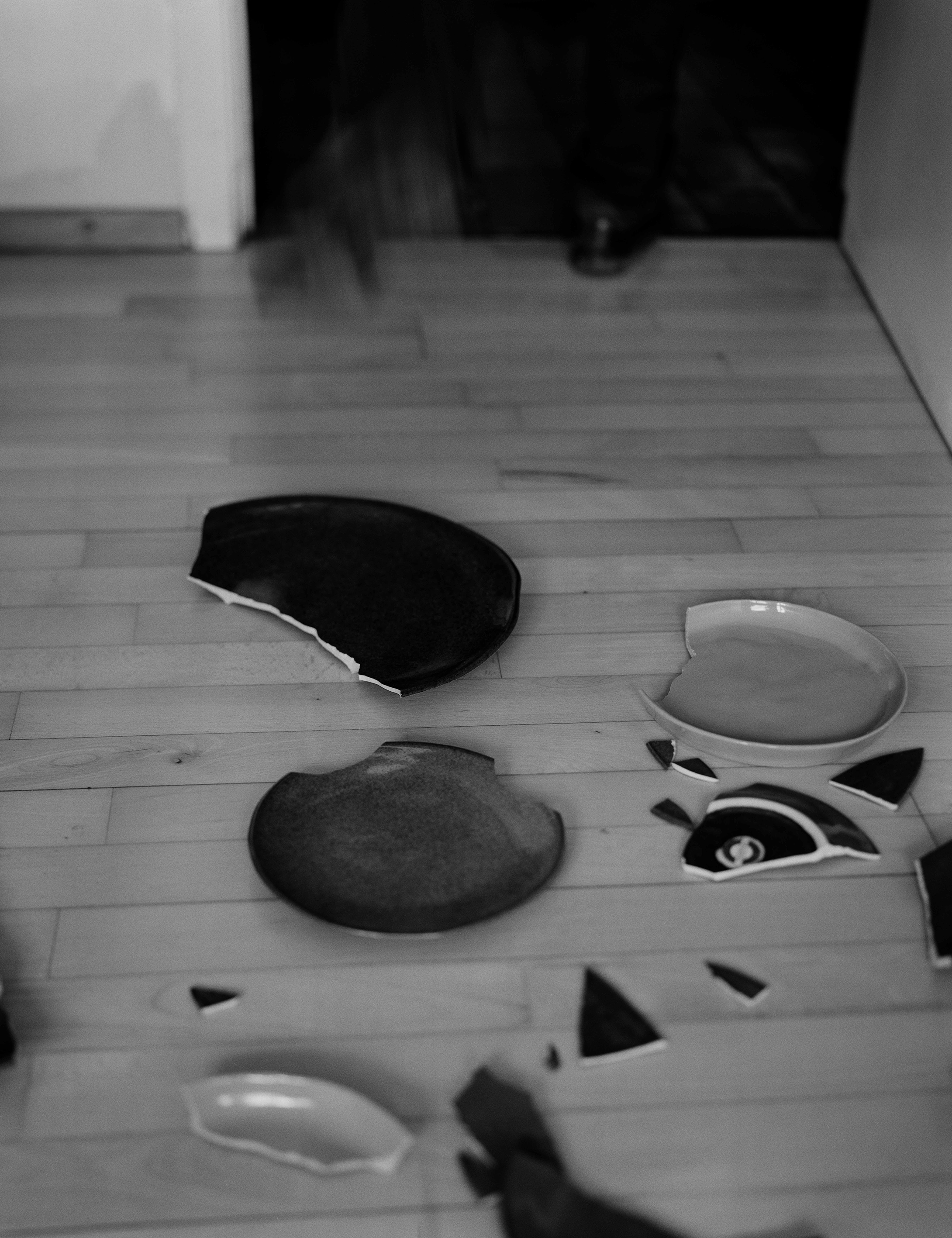Léa Thijs – Safe House
WORDS BY IZABELA RADWANSKA ZHANG
Bipolar disorder is a disease of the mind and the mood. It is a condition that is psychologically all-consuming, dictating your emotional experience of each moment and interaction. Periods of intense depression are followed by euphoric highs, and then lows again. And so it fluctuates. Then, there is a stigma towards the mental illness, in that its diagnosis can be devastating for the individual and those closest to them. But what if that diagnosis instead brings relief, the relief of finally understanding and making sense of something that has caused you and your family years of confusion and distress.
Lea Thijs, a photography student just graduated from the University of Middlesex, reflects on her personal experience of just this in her series, Safe House. Shot between South Africa and Belgium, her two home countries, she makes a candid portrait of her father, Alain’s, day-to-day living with the disorder. We see him in his garden standing against a wall of bamboo, reaching his arms up to the sky with a look of content; we see him hanging sheets and towels out to dry in the sun; and lying down, stretched out on the grass. We also see a desk buried in an avalanche of books and paper, smashed ceramic plates on the floor, and find him lying in bed in a dark room despite the sun shining outside the curtained window. We see him both in the foreground, and the background, and as a distorted reflection. The images show the good and the bad, the laughter and the strain, the balance and the turmoil. “I want nothing to be taboo,” the photographer explains.
The decision to take the photographs on black and white film was a considered one. Having the images composed of only dark and light in some way translates the “constant duality of things” for Thijs’ father. There are the tonal two extremes, but there is also a grey area. Thijs’ father is also colour blind, so this way they were both able to view the images in the same way.
This was important. Documenting her father’s condition made for an extremely personal theme for Thijs to unpack and share, but it is also a delicate interplay given the relationship of the photographer and her subject. She has never worked so collaboratively, but her father’s involvement and enthusiasm, and his ability to have some of the control, became a fundamental part to how Safe House has become manifest. Though reluctant at first to be so central to her documentary, he slowly became more comfortable, even sending suggestions and ideas via email when they were apart. Thijs has hopes to publish the project in a book, and it will be her father’s words that provide the text to accompany her photography.
Throughout the majority of images, the camera peers into Alain’s private life seemingly unnoticed. But there is one portrait, where he looks directly at and through us with glazed over eyes - a self portrait. Thijs explains that she sat her father in front her large format film camera, placing the cable to the shutter release in his hand, and left the room. “I wanted to portray something more truthful,” she says.
Safe House is an exploration of Alain Thijs’ disorder and life, but it is also one of of Lea Thijs’ relationship with her father since his diagnosis. With this project, she explains, that relationship has grown closer - now “incredible” - giving her an unexpected deeper understanding of their family history and his personality. “It has changed how I perceive the past,” she says. When he was diagnosed in 2015 after 20 years of living in the unknown, it was indeed a relief for her family. “It helped us accept a lot of mistakes he had made, and it was a relief for him because he understood what was going on in his head.” She adds: “I hope to make people think about understanding the family and the mind more, and maybe reconsider their reactions so they are not just based on the emotions they feel.”








